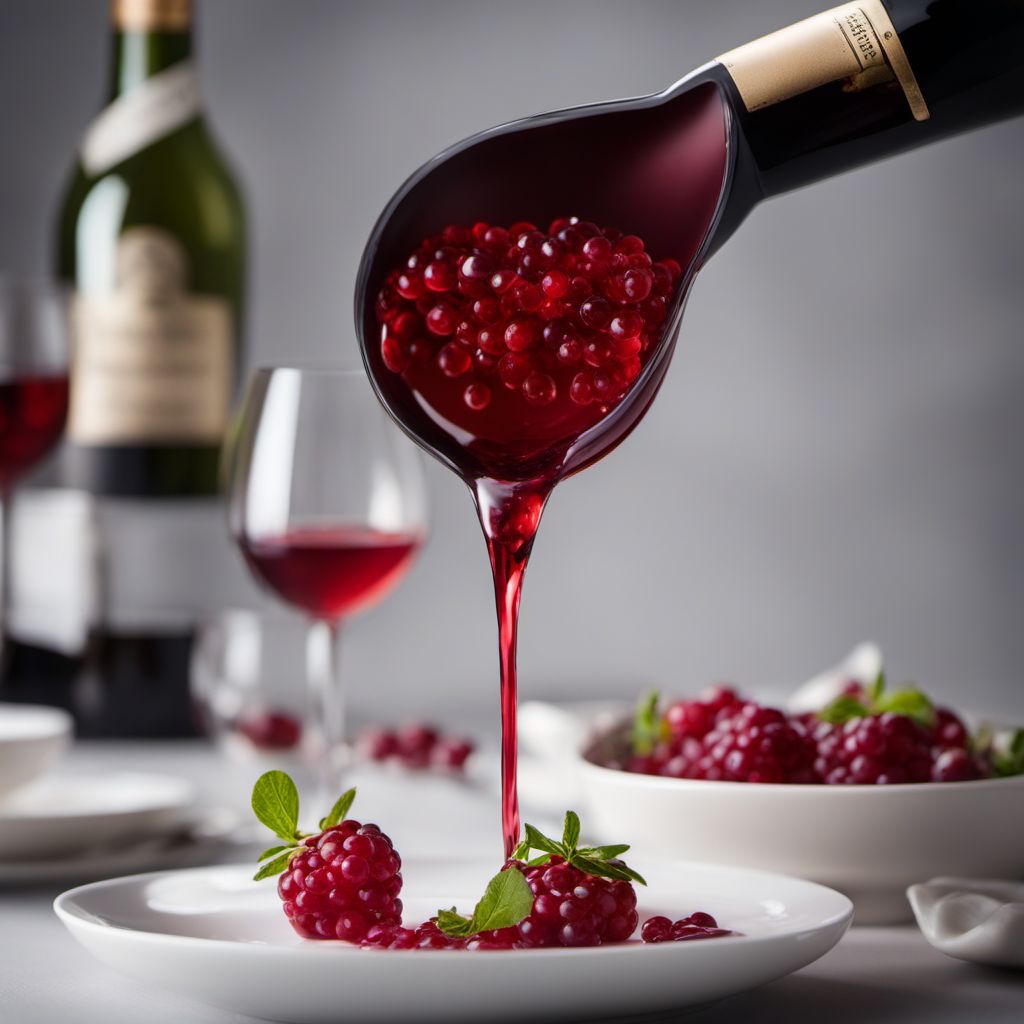
Ingredient
Wine, red
The Elixir of Elegance: Unveiling the Richness of Red Wine
Red wine, derived from fermented grapes, boasts a rich and vibrant hue that can range from ruby red to deep purple. Its taste is often described as bold and robust, with a complex flavor profile that can include notes of berries, cherries, plums, and even hints of spice or earthiness. The texture of red wine can vary depending on the grape variety and winemaking techniques, but it generally has a smooth and velvety mouthfeel. Its appearance in dishes adds a touch of elegance and sophistication.
Origins and history
Red wine has a long and storied history that dates back thousands of years. The origins of winemaking can be traced to ancient civilizations in Mesopotamia, Egypt, and Greece. Throughout history, red wine has played a significant role in various cultures, from the sacramental wine of religious ceremonies to the centerpiece of social gatherings and celebrations. Today, red wine is produced in numerous regions around the world, with notable wine-growing countries including France, Italy, Spain, and the United States.
Nutritional information
Red wine is a source of antioxidants, including resveratrol, which has been associated with potential health benefits. It is also low in calories, with an average of 125 calories per 5-ounce serving.
Allergens
Red wine may contain sulfites, which can trigger allergic reactions in some individuals.
How to select
When selecting red wine, look for bottles with intact and undamaged labels, as well as a tight cork or seal. Consider the grape variety, vintage, and region to find a red wine that suits your taste preferences. Additionally, seek guidance from knowledgeable staff at specialty wine shops or consult reputable wine guides for recommendations.
Storage recommendations
To maintain the freshness and quality of red wine, store it in a cool, dark place away from direct sunlight and extreme temperature fluctuations. Once opened, reseal the bottle tightly and store it in the refrigerator for up to a week.
How to produce
While producing red wine requires specialized knowledge and equipment, amateur wine enthusiasts can explore home winemaking kits or participate in winemaking workshops to learn the basics and produce small batches of red wine.
Preparation tips
Red wine is a versatile ingredient that can be used in a variety of culinary applications. It adds depth and complexity to sauces, stews, and marinades, enhancing the flavors of meats, poultry, and vegetables. When using red wine in cooking, allow it to simmer and reduce to concentrate its flavors. For desserts, red wine can be incorporated into rich chocolate cakes or used to poach fruits for a luxurious finish.
Substitutions
In recipes that call for red wine, suitable substitutes include grape juice, cranberry juice, or beef or vegetable broth, depending on the desired flavor profile. These alternatives can provide similar depth and richness to dishes.
Culinary uses
Red wine is a staple in classic dishes such as Coq au Vin, Beef Bourguignon, and Italian Bolognese sauce. It is also commonly used in reductions, deglazing pans, and as a base for flavorful gravies and sauces.
Availability
Red wine is widely available in regions where winemaking is practiced, including Europe, North America, South America, Australia, and New Zealand.
More ingredients from this category
Recipes using Wine, red » Browse all
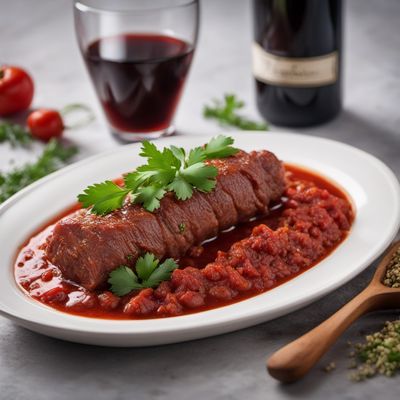
Tatar-Style Drunken Braciole
Savory Beef Rolls in a Boozy Tatar Twist
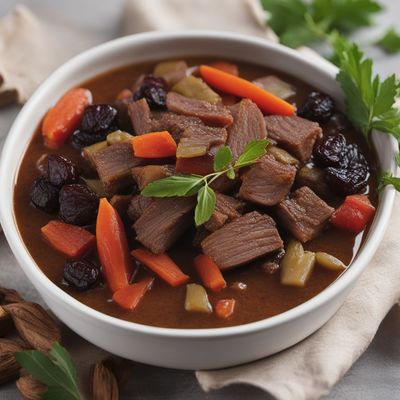
Cinghiale in Dolceforte
Savory and Sweet Wild Boar Stew

Beef & Broccoli à la Française
Tender Beef and Crisp Broccoli in a French Twist

Cochinita Pibil
Porc Pibil: A French Twist on a Mexican Classic

Hearty Finnish Sailor's Stew
Savory Sea Adventure: A Finnish Sailor's Stew

Haute Cuisine Inspired Etli Ekmek
Savory Delight: Haute Cuisine Twist on Etli Ekmek
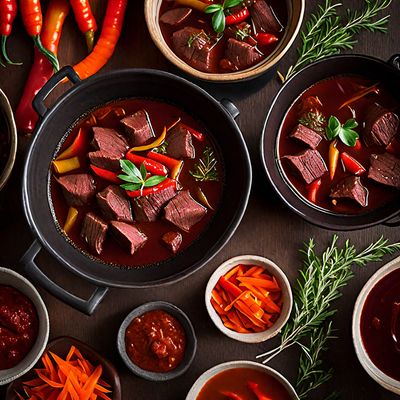
Spanish-style Beef Bourguignon
Sabroso Estofado de Ternera al Estilo Español (Delicious Spanish-Style Beef Stew)
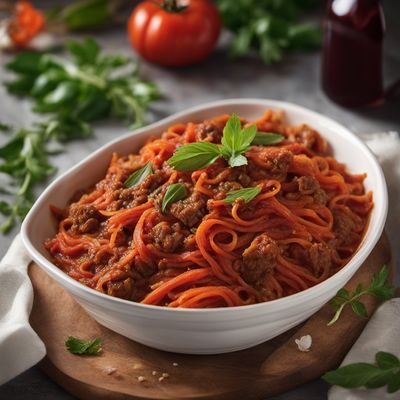
Ragù alla Pugliese
Hearty Puglian Meat Sauce: A Taste of Southern Italy

Classic Hachis Parmentier
Savory French Comfort: Classic Hachis Parmentier
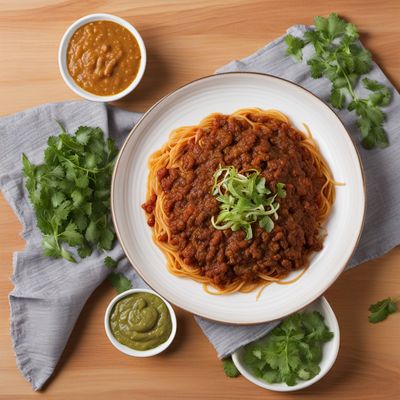
Argentinian-style Cincinnati Chili
Tango-infused Chili: A Spicy Argentinian Twist on Cincinnati's Classic

Greek Stifado with Slow-Cooked Beef and Aromatic Spices
Mediterranean Delight: Slow-Cooked Greek Stifado with Tender Beef and Fragrant Spices

Italian Lamb Stew with Potatoes
Hearty Tuscan Lamb Stew: A Taste of Italy's Countryside


